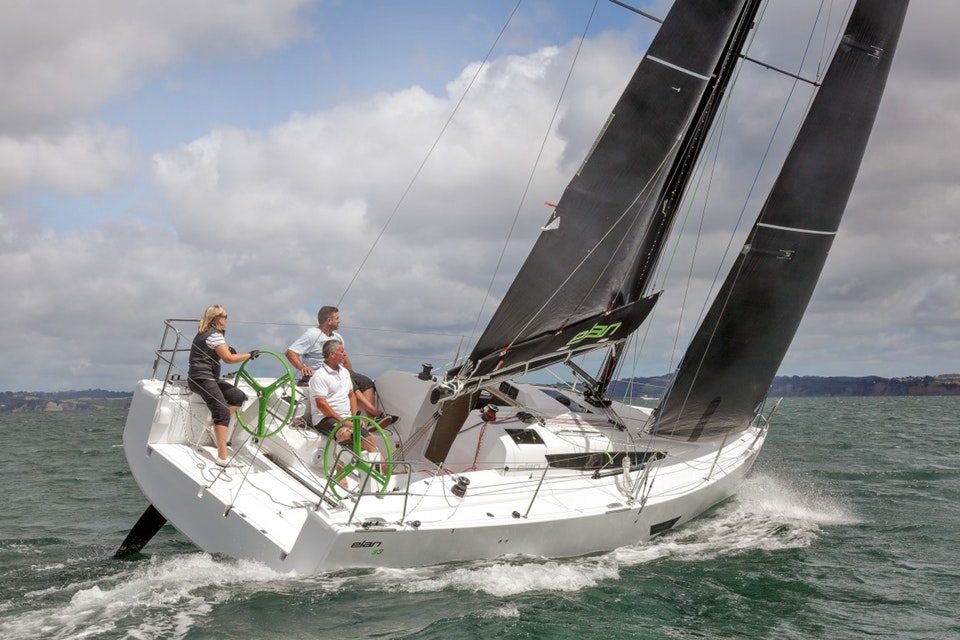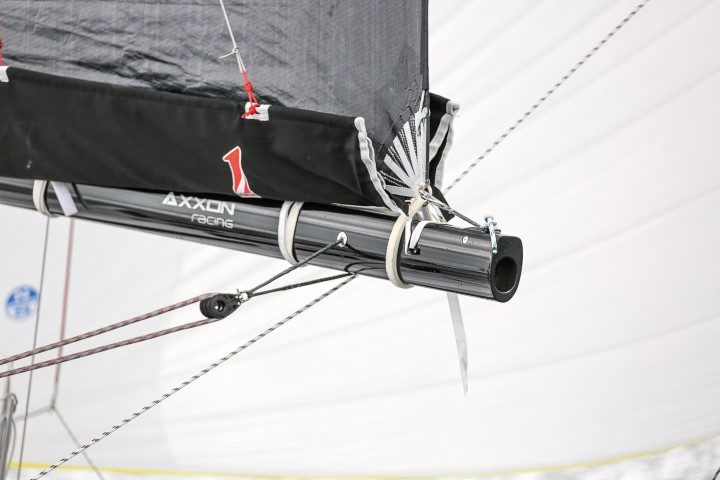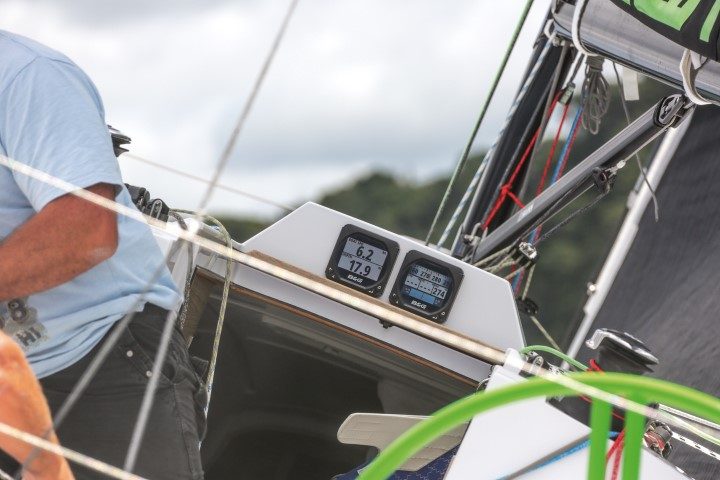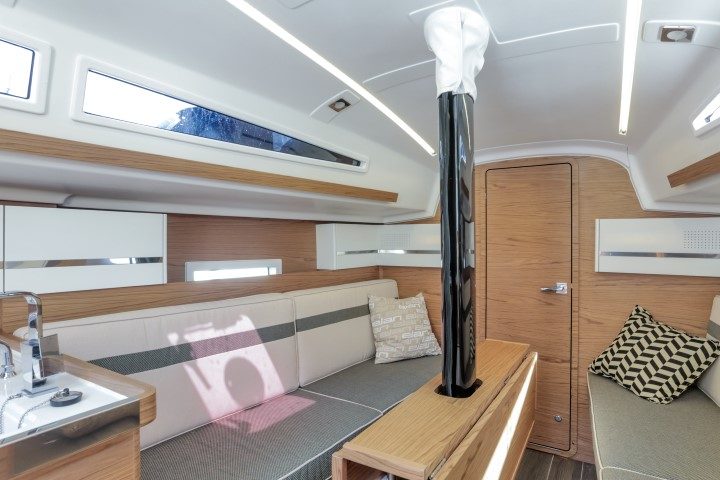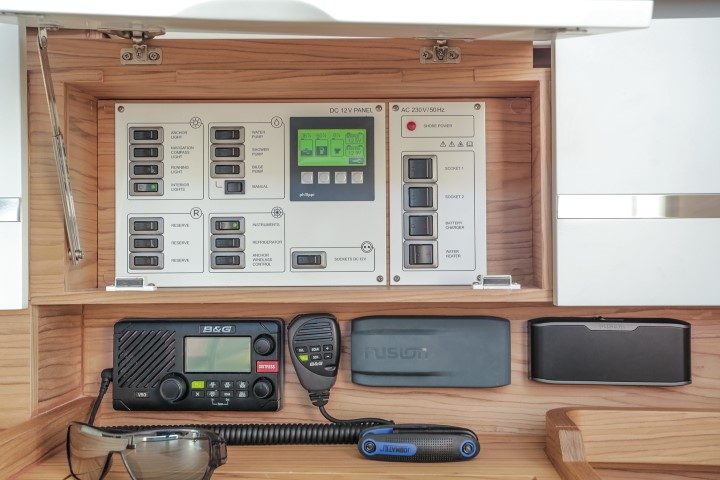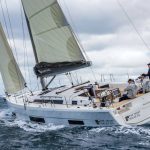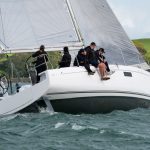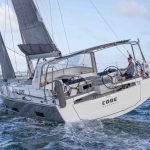‘Behemoth’ is a word which springs to mind or, perhaps more nautically, ‘leviathan’.
- All the performance boxes have been ticked
- Square-top main by North Sails
- Privides a bit of performance 'bite' when the wind gets up
- Twin wheels look sharp and work well
- Carbon rig
- Lightweigh foam sandwich construction
- Cockpit works well
- Standard interior
- Lighter and more nimble than cruising Elans
- Wand requires an extra crewman to prevent it catching on the main during a gybe
- Interior layout is practical if unconventional

